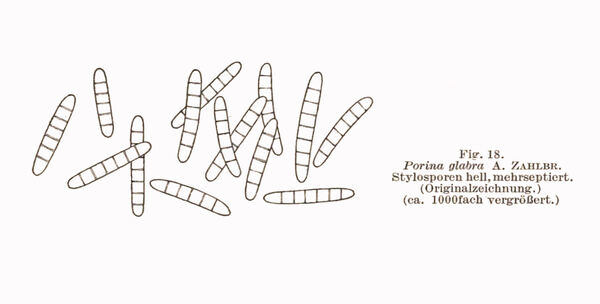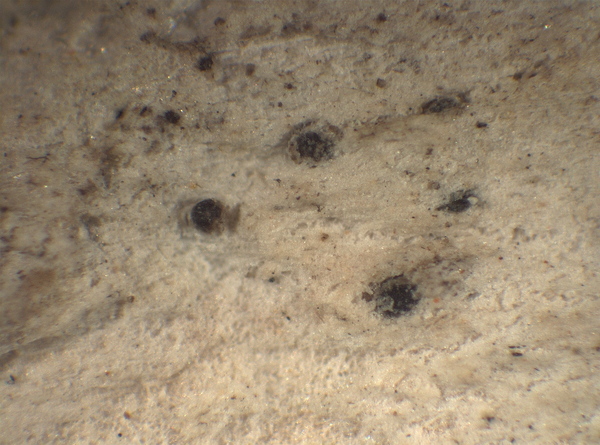Swinscowia glabra (A. Massal.) S.H. Jiang, Lücking & Sérus.
in Hongsanan &al., Fungal Divers.: 10.1007/s13225-020-00462-6, 138, 2020. Basionym: Sagedia glabra A. Massal. - Ric. Auton. Lich. Crost.: 161, 1852.
Synonyms: Arthopyrenia glabra (A. Massal.) J. Nowak & Tobol.; Porina glabra (A. Massal.) Zahlbr.; Pyrenula netrospora Nägeli; Sagedia candida Anzi; Sagedia phyllireae Jatta; Spermatodium glabrum (A. Massal.) Trevis.; Strigula glabra (A. Massal.) V. Wirth
Distribution: N - VG (TSB 35653), Ven, Lomb (Roux & Sérusiaux 2004). S - Camp (CLU 18028), Pugl, Cal (Puntillo 1996), Si (Caniglia & Grillo 2003, , Ravera & al. 2024).
Description: Thallus crustose, endosubstratic or very thinly episubstratic, whitish to pale grey, often bearing macropycnidia only. Perithecia rather rare, black, 0.3-0.6 mm across, only the lower fourth immersed in the thallus, round to usually elliptical, flattened at the top. Involucrellum blackish brown, extending to the base of the perithecium, markedly larger than the exciple, the latter colourless to brownish; hamathecium of paraphysoids which are mostly simple, and only rarely branched and anastomosing, except when adjacent to exciple. Asci 8-spored, narrowly clavate, bitunicate-fissitunicate, shortly stalked at base, the apex thickened into a tholus, with a narrow ocular chamber, I-. Ascospores (3-)6-7-transversally septate (rarely with a single longitudinal septum), hyaline, fusiform, 20-27 x (3-)4-5(-6.5) μm, uniseriate to sub-biseriate in the asci, not restricted at septa. Macropycnidia 0.1-0.25 mm across, half-projecting, black, rounded and somewhat flattened, resembling perithecia; macroconidia subapically inserted on the conidiogenous cell, (3-)5-7(-8)-septate, cylindrical, (18.5-)22-26(-28) x 3.5-4.5 μm, rounded at apex and with a gelatinous appendage. Photobiont trentepohlioid. Spot tests: thallus K-, C-, KC-, P-, UV-. Chemistry: without lichen substances. Note: a mild-temperate lichen found on smooth bark of deciduous trees (e.g. Carpinus, Fagus, Fraxinus), especially in humid deciduous woodlands along rivers and creeks. It is included in the Italian red list of epiphytic lichens as “Vulnerable” (Nascimbene & al. 2013c).
Growth form: Crustose
Substrata: bark
Photobiont: Trentepohlia
Reproductive strategy: mainly sexual
Commonnes-rarity: (info)
Alpine belt: absent
Subalpine belt: absent
Oromediterranean belt: absent
Montane belt: very rare
Submediterranean belt: very rare
Padanian area: absent
Humid submediterranean belt: very rare
Humid mediterranean belt: extremely rare
Dry mediterranean belt: absent

Predictive model
Herbarium samples
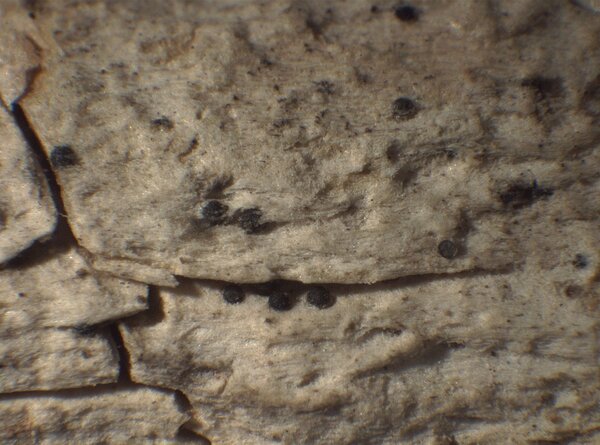

E. Pittao; Owner: Department of Life Sciences, University of Trieste
Herbarium: TSB (17244)
2008.03.10
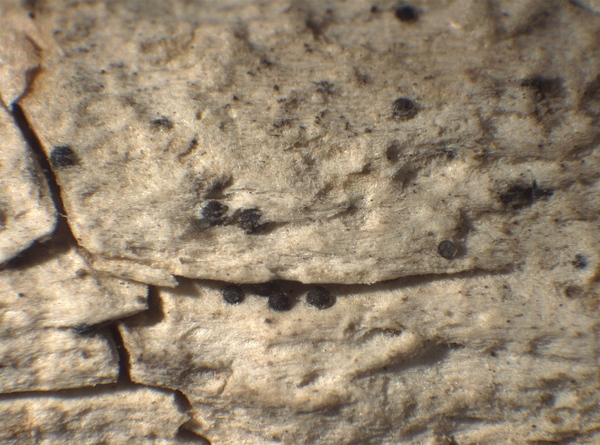

E. Pittao; Owner: Department of Life Sciences, University of Trieste
Herbarium: TSB (17244)
2008.03.10


E. Pittao; Owner: Department of Life Sciences, University of Trieste
Herbarium: TSB (17244)
2008.03.10
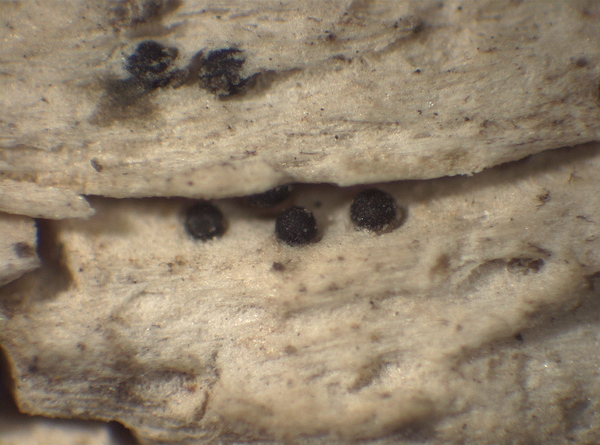

E. Pittao; Owner: Department of Life Sciences, University of Trieste
Herbarium: TSB (17244)
2008.03.10
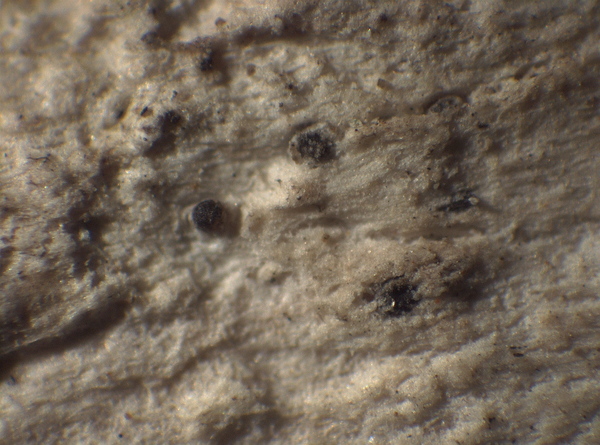

E. Pittao; Owner: Department of Life Sciences, University of Trieste
Herbarium: TSB (17244)
2008.03.10
Growth form: Crustose
Substrata: bark
Photobiont: Trentepohlia
Reproductive strategy: mainly sexual
Commonnes-rarity: (info)
Alpine belt: absent
Subalpine belt: absent
Oromediterranean belt: absent
Montane belt: very rare
Submediterranean belt: very rare
Padanian area: absent
Humid submediterranean belt: very rare
Humid mediterranean belt: extremely rare
Dry mediterranean belt: absent

Predictive model
| Herbarium samples |


E. Pittao; Owner: Department of Life Sciences, University of Trieste
Herbarium: TSB (17244)
2008.03.10


E. Pittao; Owner: Department of Life Sciences, University of Trieste
Herbarium: TSB (17244)
2008.03.10


E. Pittao; Owner: Department of Life Sciences, University of Trieste
Herbarium: TSB (17244)
2008.03.10


E. Pittao; Owner: Department of Life Sciences, University of Trieste
Herbarium: TSB (17244)
2008.03.10


 INDEX FUNGORUM
INDEX FUNGORUM
 GBIF
GBIF
 DOLICHENS
DOLICHENS

